Social Scene
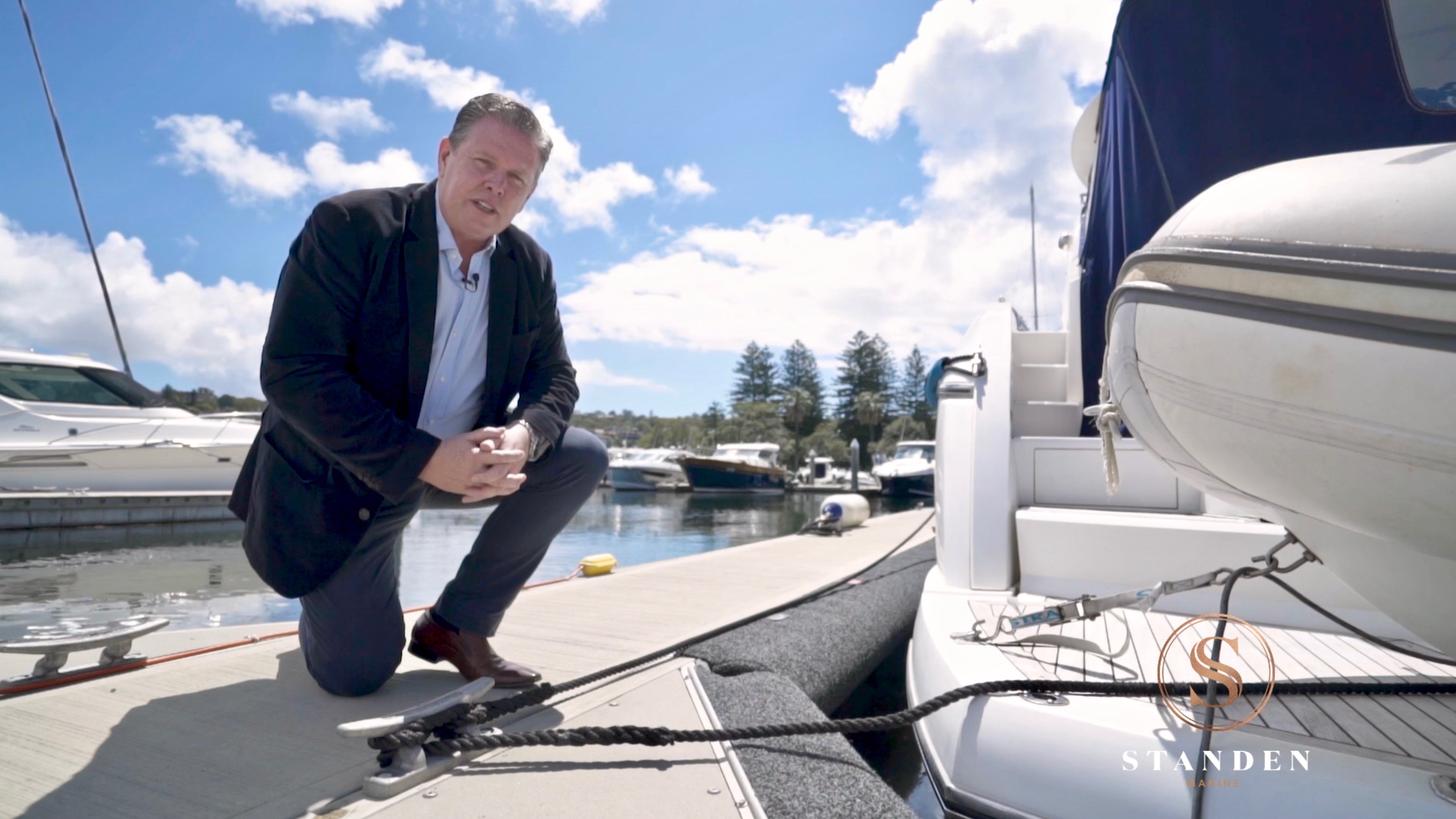
Boating Tip: Docklines
You Should Regularly Check Your Docklines – At Least Annually.
The only thing holding your multi-tonne boat in place is a few thin ropes!
Remember, you are rarely on board when most storms comes blowing through. The strain placed upon your dock lines by the wind gusts associated with such storms are incredible. So why wouldn’t regularly check them and replace them?
Over time, the fierce Australian sun causes the material of your dock lines to become brittle and although they seem ok to most folks, there is increased stiffness in the flexibility and reduced ability to stretch under load.
When a storm comes through, the forces placed on these lines could cause them to break and before you know it your boat is doing a random tour of the marina – sans crew! The amount of possible damage to your boat and all the others is just mind boggling, especially if it breaks loose in the middle of the night when no one will notice.
Give yourself peace of mind by regularly checking the serviceability and security of your dock lines. I would recommend doing this at least annually if not six monthly. Importantly, if a nylon dock line is stretched beyond the regular elasticity of the material, it will be very difficult to detect unless you know the exact length that the line was when new.
In tests performed in the U.S. on weathered 10- to 12-year-old nylon three-strand dock line, engineers found some disturbing facts at the microscopic level. The report said in its conclusions, “Our test shows that even when you eliminate the effects of chafe, up to 75-percent of the original tensile strength in our sample ropes was lost. Although experts tell us that nylon has great ultra-violet damage resistance and chemical stability, our testing revealed a worrisome trend.” (Published by Practical Sailor – December 2007)
When performing checks on your dock lines, look for:
- Obvious stretching
- Frayed strands
- Chafing of any level
- Discolouration or sun damage
- Stiffness and lack of flexibility
- Misshapen line form
- Signs of damaging spills on the fibres (petroleum oils etc)
If you have doubt about a dock line, just replace it! The price of dock lines is nothing compared to the damage an unsecured boat could sustain.
Common rope used for dock lines includes three strand nylon and double-braided nylon.
Three Strand
This is the most economical rope available on the market. It consists of many tiny fibres spun into yarns, and then formed into strands. Three Strand ropes are flexible, easily spliced and knotted. Examples below illustrate the most common colours for dock lines, white and black, but navy and other colours are available. Three Strand is available in a Hard, Medium(standard) and Soft Lay.
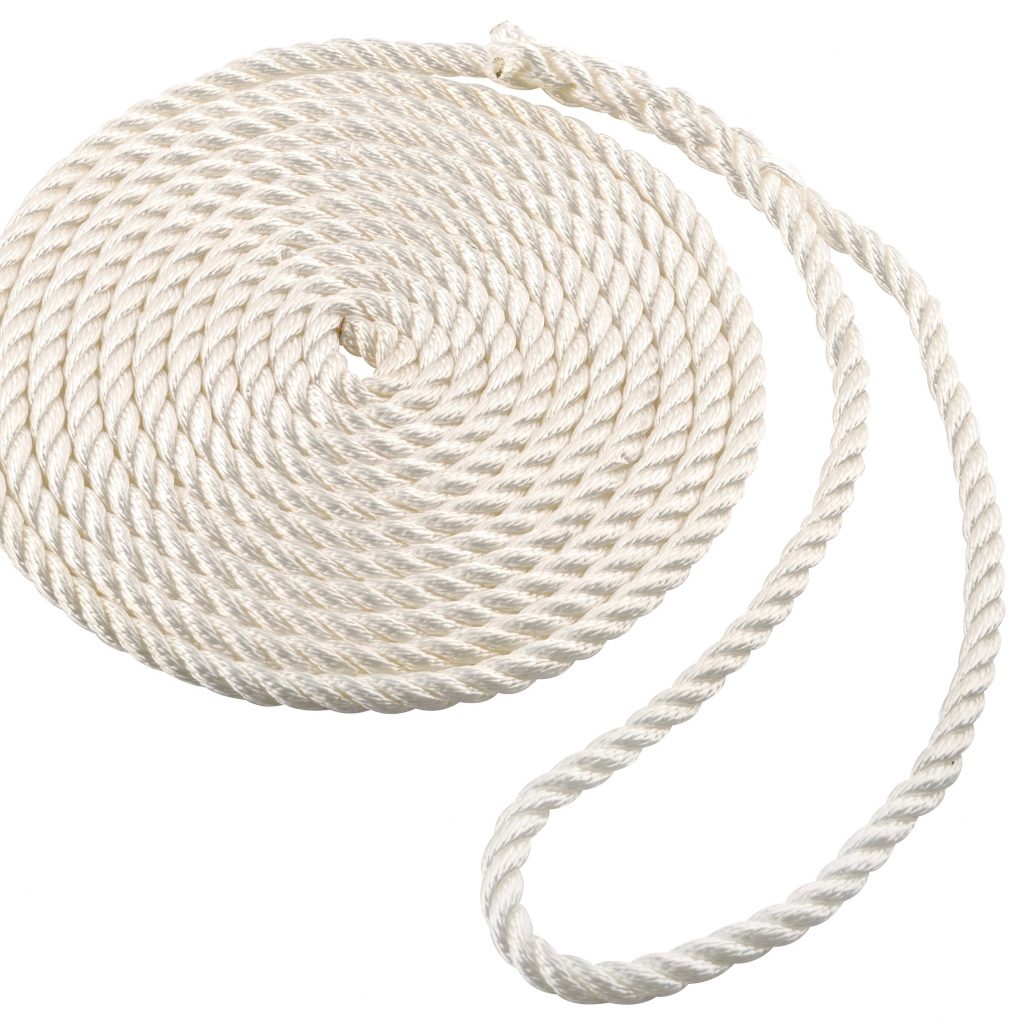
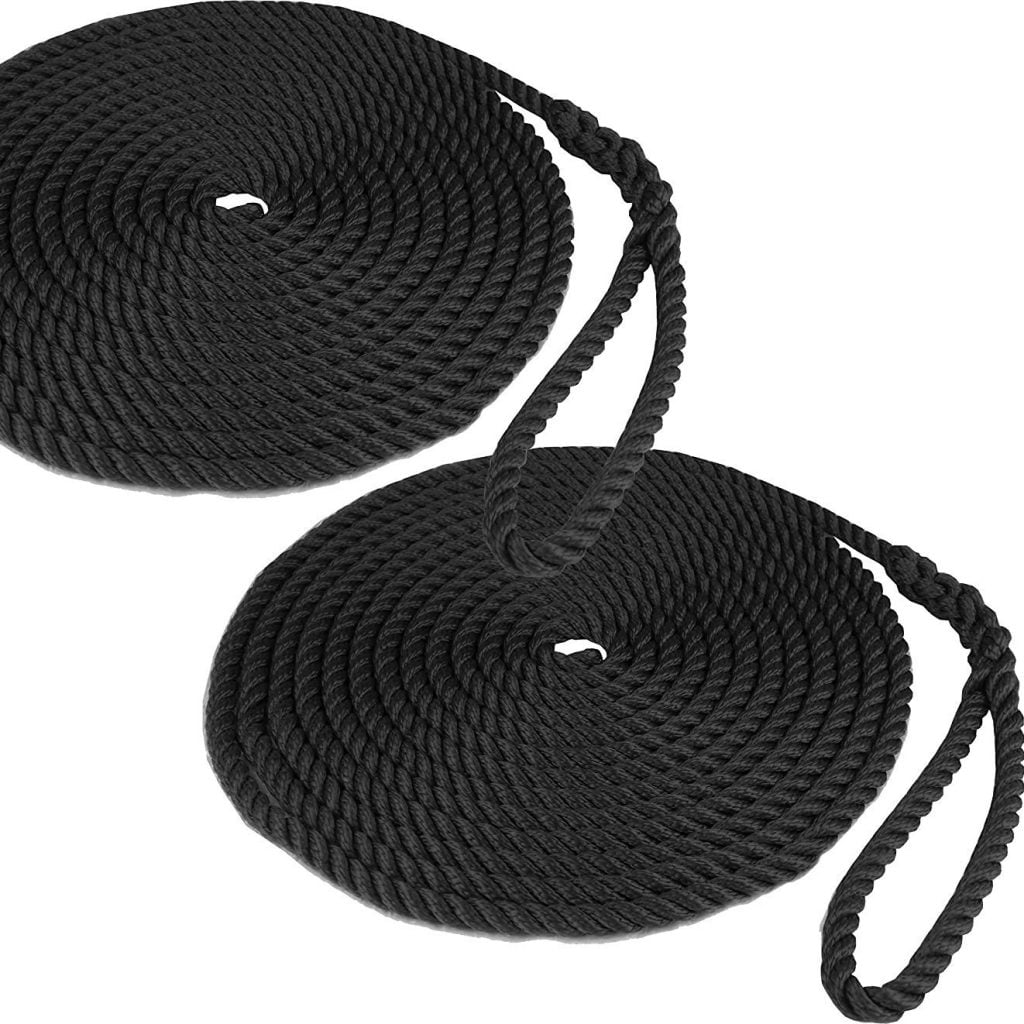
Double-Braided
Braided rope is also a common marine rope which is designed for great strength to weight ratio. Double Braid ropes have a braided core encased in a braided jacket cover and is designed to bear equal load on the core and cover. These ropes offer high strength and very good abrasion resistance. Double-braided rope is quite difficult to splice but there are experts available who can perform the task for you. Having said that, if you feel inclined to learn, there are also places that will teach you!
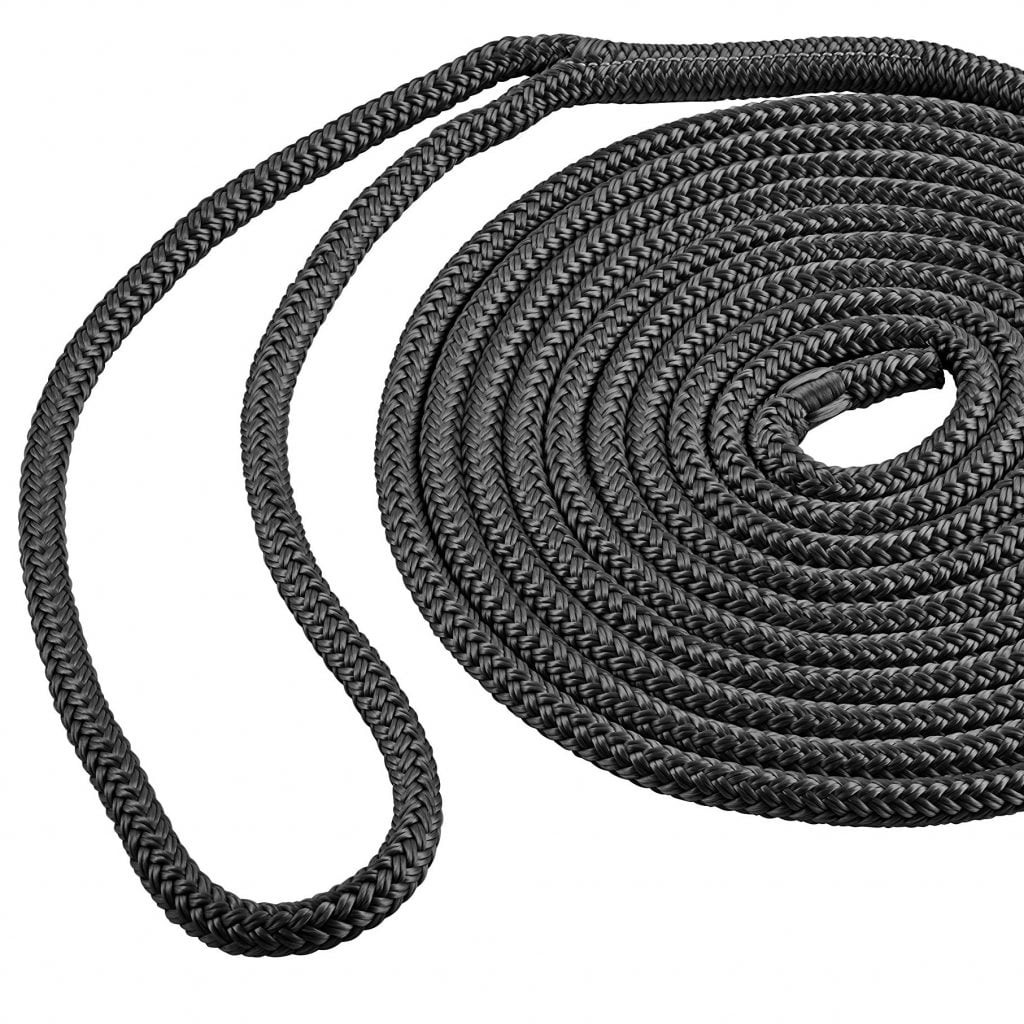
Pro-Tip: Permanently attach your dock lines to the cleats in your regular berth or pontoon by splicing them onto the cleats with an eye splice. If you then measure the required length to the cleats on your boat and place another eye splice at the end, your dock lines will automatically be the correct length every time you dock.
If you would like to splice your dock lines onto your cleats, doing this with Three Strand rope is easier to learn and offers ease of docking because all your lines are ready to drop over your boat’s cleats when you come along side. Some boat owners even colour code their individual cleats to the matching dock line using coloured electrical tape so that the novice deck hands and passengers can do the job without much training.
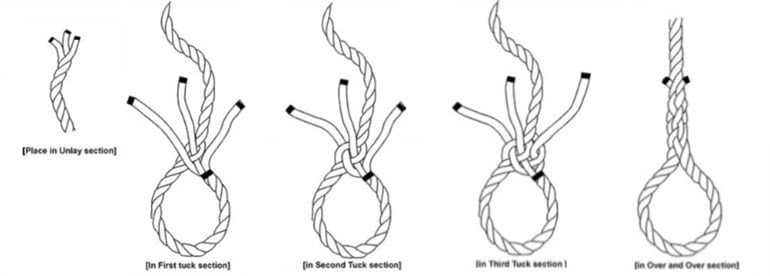
Chafe Guards
To get longer life out of your dock lines and protect the surface of your boat, I recommend the use of Chafe Guards. These are soft sacrificial pieces of fabric that are fixed around the dock line where it is likely to chafe or snag on fittings or vessel fixtures.
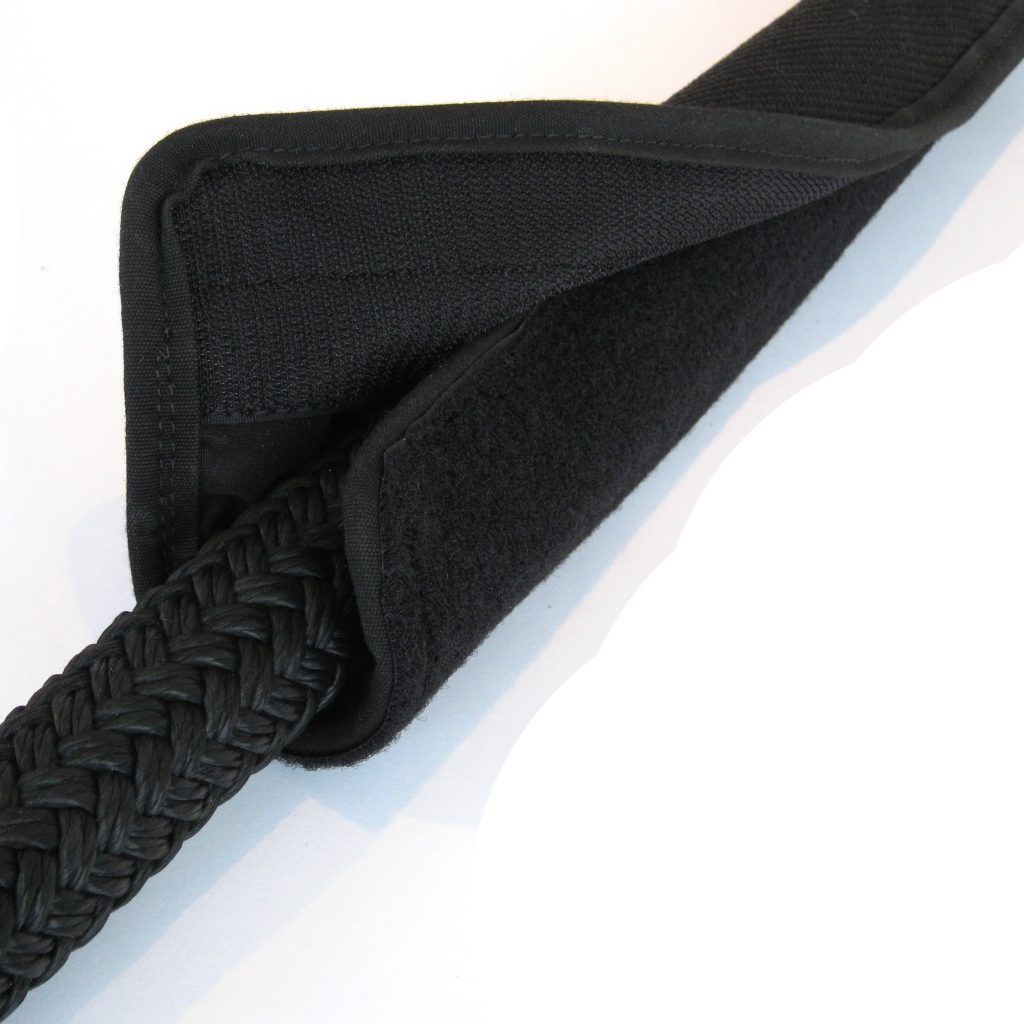
Chafe Guards can be purchased off the shelf from chandleries these days and often have velcro closures like the one pictured above. Some have ties to keep them in place on the rope but many people use a ziplock cable tie to secure them if they are located in a position that isn’t likely to scratch.
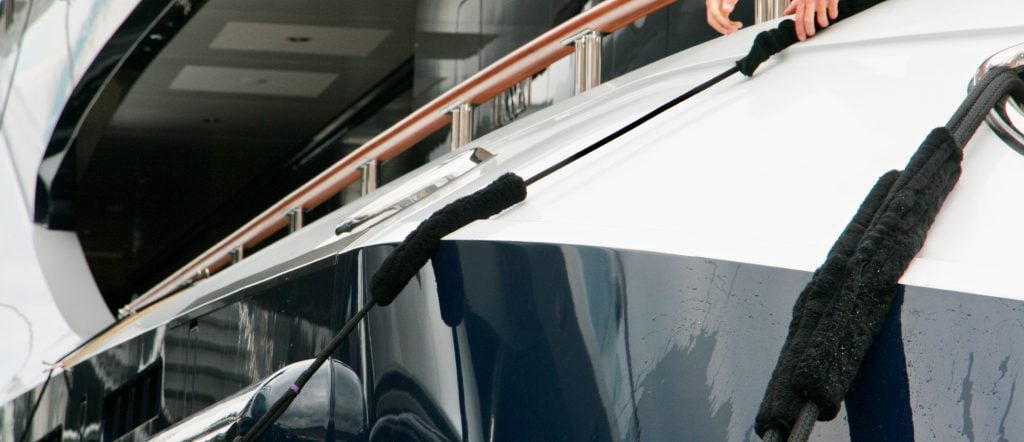
If you would like some assistance with your docklines, don’t hesitate to give us a call on +61 (0)2 8880 4088 or email at marine@standengroup.com.au
Author: Steve Williams | Standen Marine
Video: Standen Group Marketing
Photos: Photos remain the property of their respective owners. Please contact us for acknowledgment.